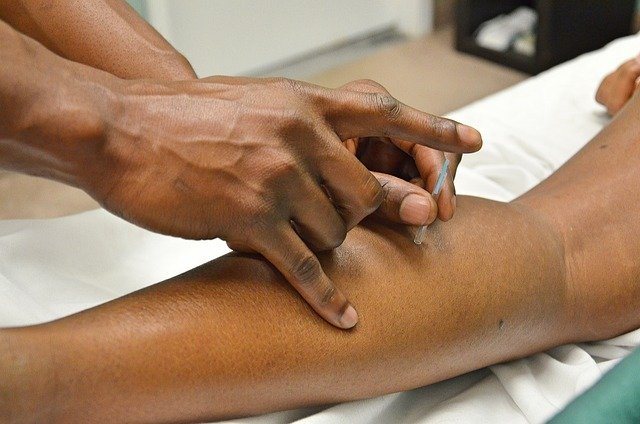Liposuction Explained: Your Guide to Fat-Removal Surgery
Liposuction is a widely used cosmetic procedure for removing stubborn fat pockets and refining body contours. This guide explains how liposuction removes fat cells permanently, who makes a good candidate, the different surgical techniques, recovery expectations, potential risks, and non-surgical alternatives to consider before committing.

Liposuction is a surgical approach to reshape specific areas by removing excess fat cells. It’s designed to refine body contours rather than serve as a weight-loss method. When performed by a qualified surgeon, liposuction can produce lasting improvements in areas that resist diet and exercise, but it’s important to understand how it works, who benefits most, and what to expect before, during, and after the procedure.
How Liposuction Works and Candidate Criteria
The procedure removes fat cells from targeted zones, permanently reducing the number of adipocytes in those locations. However, liposuction doesn’t prevent future weight gain; remaining fat cells can enlarge if you gain weight later. Ideal candidates are generally healthy adults who are at or near their ideal body weight, have specific trouble spots, and possess reasonably good skin elasticity so the skin can retract after fat removal. Realistic expectations and overall good health are essential for good outcomes.
Liposuction Techniques
Multiple techniques exist to improve precision, reduce trauma, and accelerate recovery. Choice of method depends on the patient’s needs and the surgeon’s experience.
-
Tumescent Liposuction: A local anesthetic solution—usually saline with lidocaine and epinephrine—is injected into the treatment area to numb tissue and reduce bleeding. This method is commonly used and effective for many body areas.
-
Ultrasound-Assisted Liposuction (UAL): Ultrasonic energy is applied to liquefy fat before suctioning, which can make removal easier in dense or fibrous regions.
-
Laser-Assisted Liposuction (SmartLipo): Laser energy breaks down fat cells and may stimulate some skin tightening. The treated fat is then suctioned away.
-
Power-Assisted Liposuction (PAL): A motorized cannula vibrates to help dislodge fat, allowing the surgeon to remove tissue with less manual effort and potentially more precision.
Each technique has trade-offs: some may reduce bruising or offer better contouring in certain areas, while others may add cost or require specific equipment and training.
Potential Risks and Side Effects
Like any surgery, liposuction carries risks. Complications are uncommon when surgery is performed by a board-certified plastic surgeon, but patients should be informed of possible outcomes:
- Contour irregularities: Uneven fat removal or poor skin elasticity can produce bumps, waves, or asymmetry.
- Fluid accumulation (seroma): Temporary pockets of fluid may form beneath the skin and sometimes require drainage.
- Numbness: Sensation changes are common and are usually temporary, though some areas may experience longer-lasting numbness.
- Infection: Rare but possible at incision sites.
- Internal organ injury: In extremely rare circumstances, deep insertion of instruments can cause damage to internal organs.
- Fat embolism: Very rare but serious; fat particles could enter the bloodstream and travel to the lungs or brain.
A thorough consultation and careful adherence to pre- and post-operative directions reduce the likelihood of complications.
Recovery Timeline and Aftercare
Recovery varies by the extent of liposuction and the individual, but general milestones include:
- Initial recovery: Many patients return to light work within a few days to a week, depending on how physically demanding their job is.
- Swelling and bruising: These are normal and may persist for weeks; noticeable reduction occurs over several weeks, but full resolution can take months.
- Compression garments: Wearing supportive garments for several weeks helps limit swelling, supports tissues, and encourages a smoother contour.
- Activity: Gentle walking is encouraged soon after surgery to reduce the risk of blood clots. Light exercise is commonly allowed after 2–3 weeks, while vigorous activity is often restricted for 4–6 weeks or as advised by the surgeon.
- Final results: While some improvement is visible quickly, the final shape becomes apparent after the body finishes healing—often several months post-procedure.
Following your surgeon’s instructions for wound care, garment use, and activity limits is crucial for optimal healing and results.
Alternatives and When to Consider Them
Liposuction isn’t the only option for reducing localized fat. Non-surgical alternatives may be appropriate for people who prefer less invasive approaches or who aren’t ideal surgical candidates:
- CoolSculpting: Uses controlled cooling to selectively destroy fat cells in treated areas.
- Kybella: An injectable treatment specifically for small areas of fat, such as submental fullness (double chin).
- Radiofrequency and ultrasound skin-tightening: These can reduce small amounts of fat while tightening loose skin.
- Lifestyle changes: A balanced diet and targeted exercise remain the most sustainable path for managing overall body weight and health.
A consultation with a board-certified plastic surgeon or dermatologist can help you compare options based on your goals, anatomy, and overall health.
Typical Costs
| Treatment Area | Typical Price Range (USD) |
|---|---|
| Small area (e.g., chin, arms) | $1,500 – $4,000 |
| Medium area (e.g., abdomen, flanks) | $3,000 – $8,000 |
| Large area or multiple areas | $6,000 – $15,000+ |
Cost disclaimer: The prices above are estimates only and can vary significantly by surgeon, facility, geographic location, and procedure complexity. Additional fees for anesthesia, facility use, and follow-up care may apply.
Making the Decision
Choosing liposuction should be based on realistic expectations, a clear understanding of risks and recovery, and a careful selection of a qualified, board-certified surgeon. Prepare questions for your consultation about technique options, expected results, recovery protocols, and how complications are handled.
This article is for informational purposes only and should not be considered medical advice. Please consult a qualified healthcare professional for personalized guidance and treatment.





